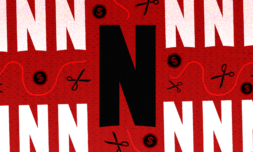Two of the platforms’ most popular livestreaming music videos were removed after users abusively reported the channel with false copyright claims.
One of the internet’s most beloved livestreams – which provided more than two years of non-stop lo-fi background music for hundreds of millions of people studying or trying to wind down – was removed by YouTube on Sunday night after users lodged a bogus copyright dispute.
Up there with the platform’s longest-ever-running content, the infamous ‘lofi hip hop radio – beats to relax/study to’ and ‘beats to sleep/chill to’ videos (recognised for their 24/7 loops of vibey beats against the image of an anime girl wearing headphones) have collectively amassed a total of 797,341,998 views since being uploaded.
Today, the channel is revered by the dedicated audience of listeners it has cultivated, who often gather on the chat feature to swap tips and support.
So when both videos were hit with a DMCA takedown out of nowhere and began serving a ‘this recording is not available’ message, fans were unsurprisingly concerned.
‘Hopefully it isn’t over yet, this stream is legitimately a hugely important part of YouTube culture,’ reads the top comment at present, referring to the various spin-off communities Lofi Girl lives in, including the 30,000-member r/LofiGirl subreddit and 700,000-strong Lofi Girl Discord. ‘I never thought this would end,’ says another.
But end it did, thanks to FMC Music, an obscure Malaysian record label that claimed the livestreams featured its tracks and had YouTube remove them, despite how Lofi Girl’s creator is widely known to own the rights to all the music it plays via its music label, Lofi Records.
The lofi radios have been taken down because of false copyright strikes, hopefully @YouTubeCreators @YouTube will sort this quickly… pic.twitter.com/X01hL6jT2N
— Lofi Girl (@lofigirl) July 10, 2022
How did this happen?
Essentially, the takedown came from an automatically issued copyright strike, meaning someone submitted a claim that the channel was playing copyrighted material.
YouTube’s system is built so that when such violations are reported the video is automatically pulled down without verification and it’s then on the creator to prove they didn’t violate copyright.
Until they’re able to do so, they are prevented from monetising their videos and collecting ad revenue.
In short, if a copyright owner submits a valid DMCA complaint through YouTube’s webform, it will take down that video and apply a copyright strike. If a user gets three of these in 90 days, their account, along with any associated channels, will be terminated.
It’s for this reason that people argue reinstating Lofi Girl’s videos isn’t enough.
That YouTube must conduct a long overdue reassessment of its current copyright policy which currently states that ‘creators should only upload videos that they have made or that they’re authorised to use,’ that ‘everyone has access to YouTube’s Copyright Management tools, which give rightsholders control of their copyrighted material on YouTube.’






















